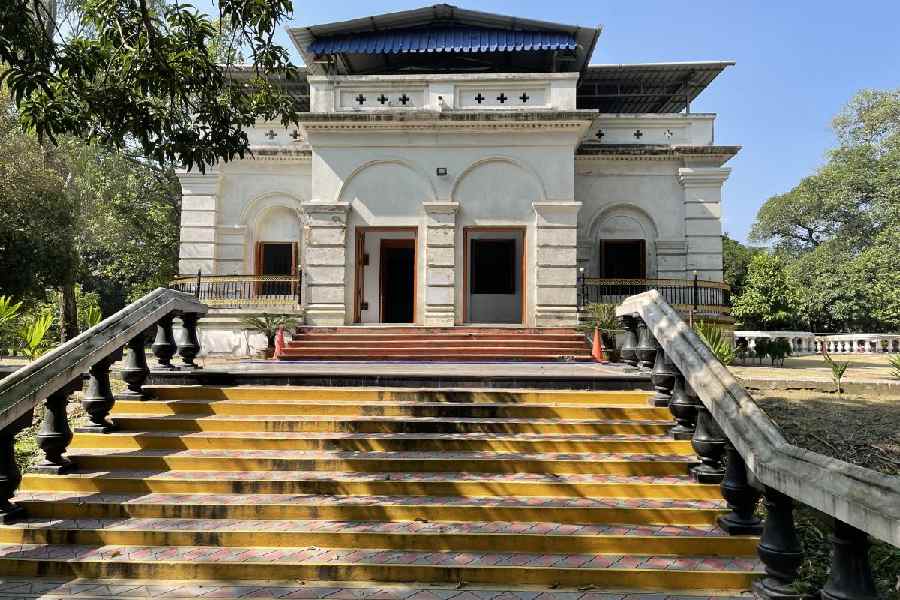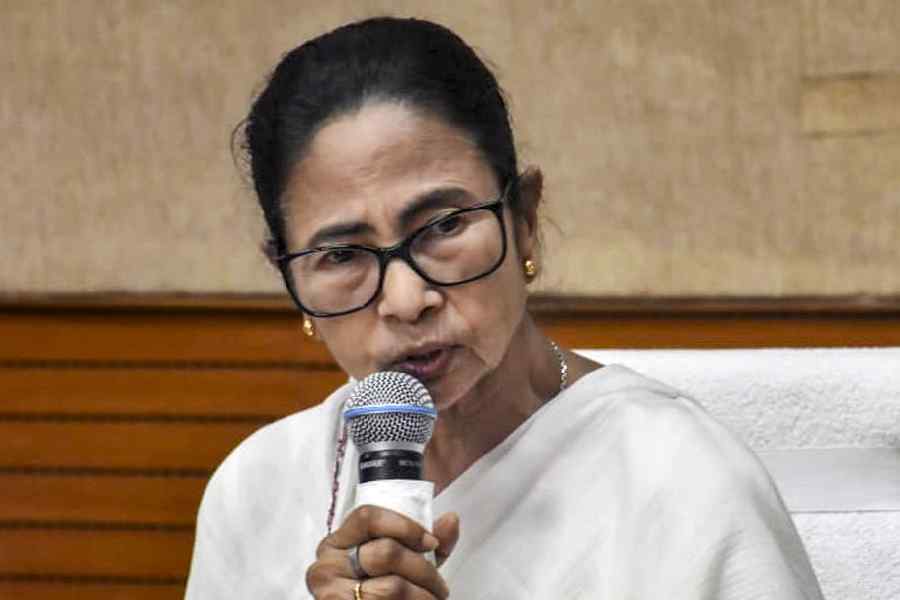A virtual exhibition of the art of the three Tagores at Konnagar Baganbari on the banks of the Hooghly was launched on August 9, breathing new life into the heritage property where Abanindranath Tagore spent a magical summer with his family in the late 1870s.
The initiative was announced in 2022 by Soumyen Bandopadhyay, Sir James Stirling Chair in Architecture at the University of Liverpool, associate dean for research at the School of the Arts, and director of the university’s Heritage Institute, working alongside ArCHIAM (Architecture and Cultural Heritage of India, Arabia and the Maghreb).
Steeped in history
The garden house holds deep significance in Bengali cultural history. Abanindranath Tagore lovingly recorded his trips to this retreat from the family seat in Jorasanko in his memoir Jorasankor Dhare, describing how the natural beauty of its surroundings stimulated his creativity.
Pratap Chandra Chunder, founder chairman of the West Bengal Heritage Commission, identified the property in 2007 as the garden house mentioned in Abanindranath’s memoir and declared it a heritage structure. The building was saved from demolition through the efforts of Bappaditya Chatterjee, former chairman of Konnagar Municipality, and is now municipal property.
Virtual experience
The bilingual exhibition, titled “Modernity, Nationhood and the Unconscious: Abanindranath Tagore and the Garden House in Konnagar,” can be accessed by scanning QR codes pasted on the walls of the five largest rooms among the house’s 13 chambers, including the entrance porch.
Thirty-six captioned drawings and paintings by Abanindranath, his elder brother Gaganendranath Tagore, and their uncle Rabindranath Tagore explore three pivotal themes in 20th-century Indian art:
Modern: Features Gaganendranath’s works, including A Cubist City (City in the Night), The Procession, Dwarkapuri, and the caricature Shantijal (Purification by Muddy Water).
Narrating the Nation: Showcases Abanindranath’s iconic Bharat Mata and Asoka’s Queen.
Realm of the Unconscious: Displays Rabindranath’s lithographs showing grotesque figures influenced by various cultures, mask-like faces, and prehistoric-looking creatures.
The artworks are primarily from the Victoria Memorial Hall collection, with some pieces from the Victoria & Albert Museum, London.
Historical context
The exhibition provides crucial historical context, documenting the socio-cultural landscape of colonial Bengal following the Permanent Settlement Act of 1793. This legislation created a windfall for landlords, leading to the proliferation of garden houses designed for leisure and artistic pursuits. The display traces how these properties changed hands as the zamindari system gradually declined, and includes architectural ground plans showing the building’s multiple renovations over time.
A special section titled River-Garden explores how exposure to the Hooghly’s ecosystem sparked Abanindranath’s imagination. Independent researcher Purba Chatterjee contributed a detailed ownership history of the property.
Preservation needs
The house faces significant challenges. Rising damp has caused visible deterioration to the walls, and the structure requires urgent repairs. Recent additions to the 12-bigha plot include a Shiva statue with a fountain (installed in 2023) and a high-rise apartment building under construction uncomfortably close to the heritage structure’s entrance.
Access & future plans
The virtual exhibition can be accessed remotely through the Victoria Memorial Hall website at https://victoriamemorial.cal.o rg/virtual.exhibitions/ via the dropdown menu. The entire project cost approximately ₹16 lakh.
Bandopadhyay of the University of Liverpool emphasised the need to form a trust for building maintenance and material curation, noting that the institution “will be very keen to provide support”. He is working to monitor and secure the QR codes installed on the walls.
This innovative blend of heritage preservation and digital technology ensures that even as the physical structure faces uncertainty, the artistic legacy of one of Bengal’s most celebrated cultural spaces remains accessible to future generations worldwide.











